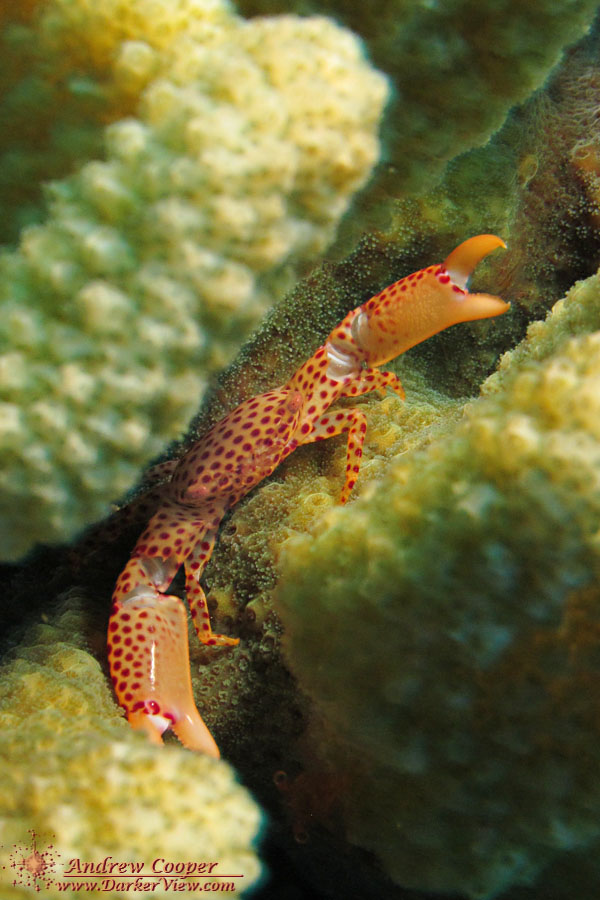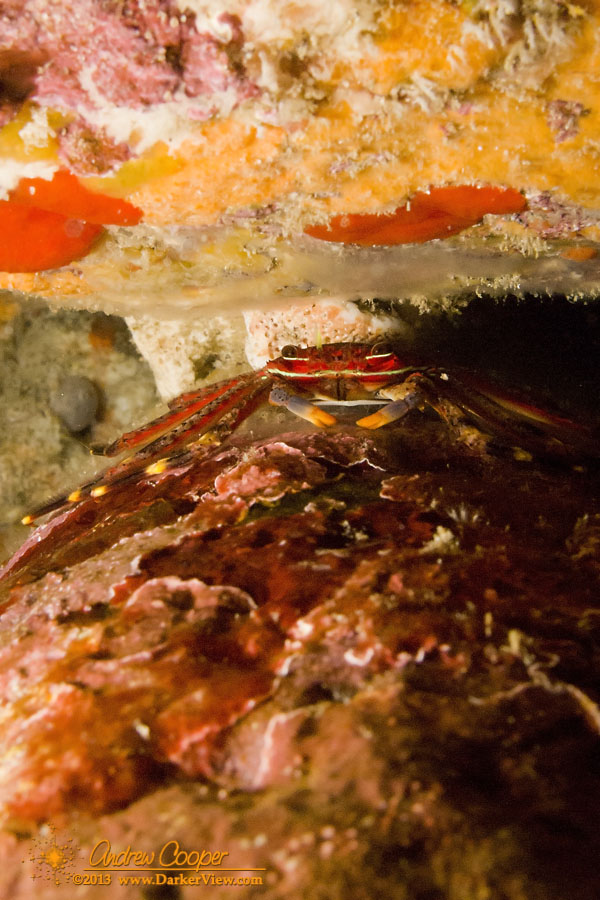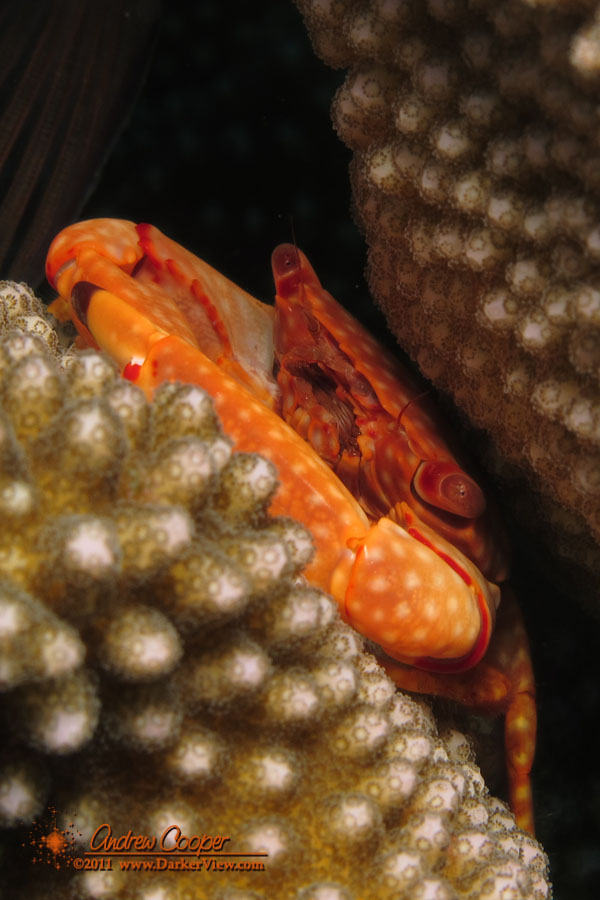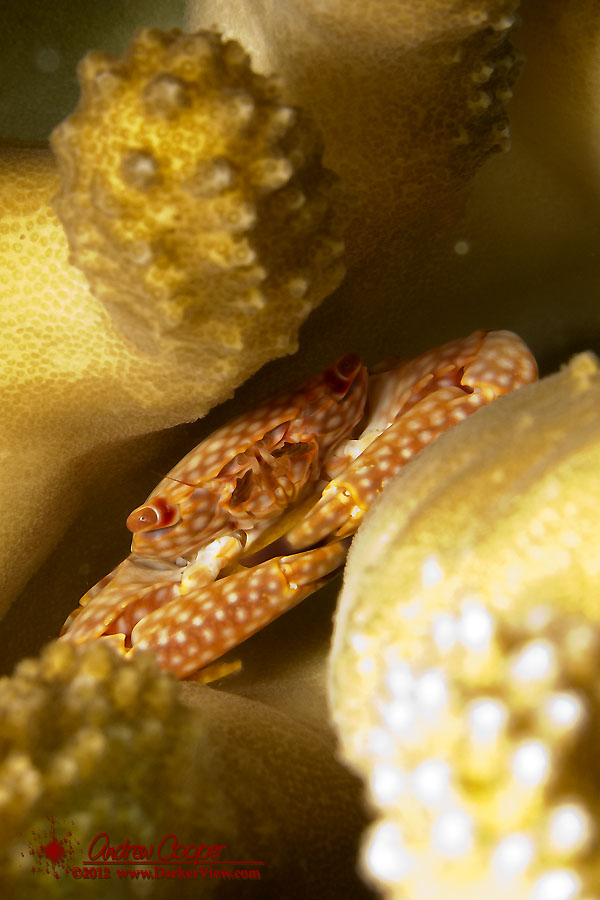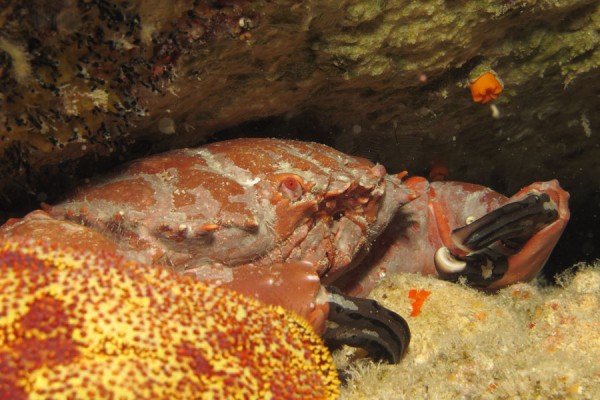
Tag: crab
Flat Rock Crab
Postcard from the Reef – Urchin Crab
Sometimes it is simply knowing where to look.
I have known about these guys for a while, even looked a few times. It is daunting when you know exactly where to look, but that place is heavily defended and tough to approach. Obtaining a photo of something that is nestled amongst six inch spines? Challenging…
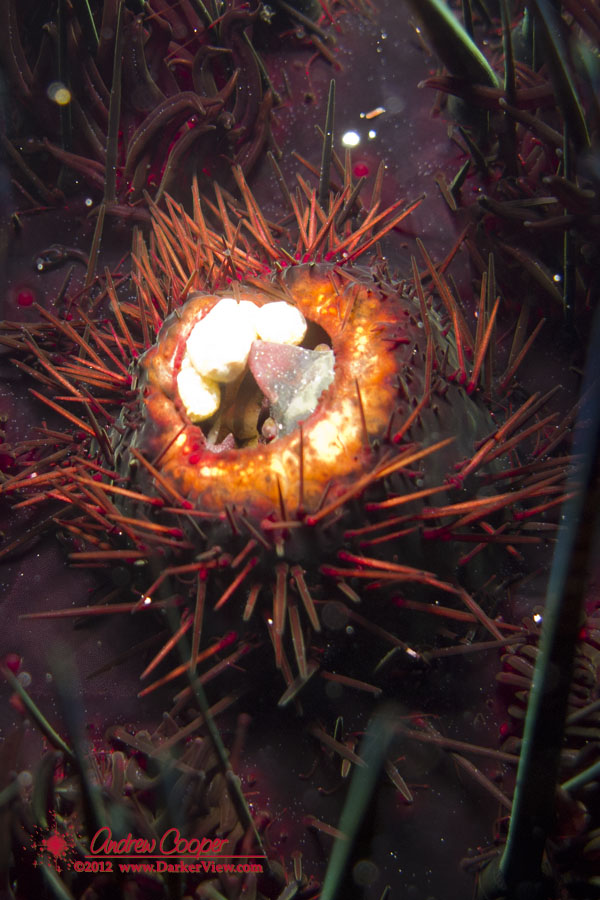
Postcard from the Reef – Red Swimming Crab
Why are so many things I shoot determined to hide in a crevice. I may be big and noisy, but I just want to take your picture, not eat you. Maybe if I hold the camera upside down, twist the strobe to the side, maybe I can get a decent photo…

Postcard from Hawaii – Alaskan Halibut
One of the dividends of an Alaskan cruise is the fish we brought back. Processed, vacuum packed and frozen while on the boat, the fish was packed into a cooler and checked for the flight back to Hawai’i. It is a bit nerve-wracking, waiting for the cooler to appear on the baggage carousel in Kona. Appear it did, all of the contents still frozen solid as we loaded it into the freezer at home.
Thirty five pounds of coho salmon, halibut and picked dungeness crab. Light on the salmon, I gave much of it to my brother. Heavy on the halibut, on orders from my wife. We did well on crab, I pulled up full traps several times and we picked crab for hours on the back deck as we cruised along. Pick half a crab… eat a leg! It was a tasty way to go.
Last week I noted the market had frozen wild-caught dungeness crab, at $26 a pound. Halibut was a bit more expensive at Costco. Figure there was about $900 worth of seafood in that cooler. We will be eating well…
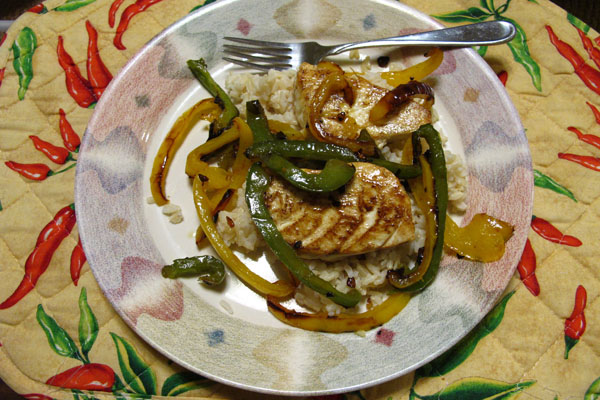
Guard Crab
Guard Crab
Guard Crab
Crab Overload
Just a few crabs in the trap this morning! Tonight’s dinner will be crab cakes with a crab louie salad. We didn’t scrimp on the amount either, the cakes have twice as much crab as the recipe calls for. No problem… there is no better crab in the world than dungeness!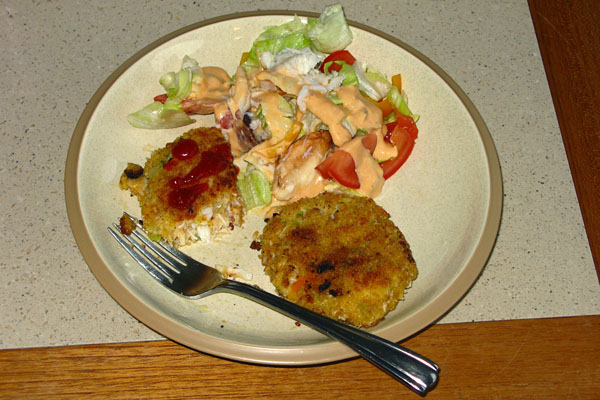
Postcard from the Reef – Guard Crab
Most divers do nothing during their safety stop, I have some trouble doing that. Hanging in the water fifteen feet below the surface for five minutes is sometimes pleasant, sometimes boring.
Also hanging fifteen feet down is the mooring ball, a buoy holding a steel cable near the surface so the dive boats can avoid dropping anchor on the reef. I have made a habit of checking out the growth on the mooring ball and line during my safety stop. I have found hydroids, wire coral gobies, even corals growing here, no real estate goes unclaimed around the reef.
A set of cauliflower corals were growing on this cable, complete with the usual community of critters that find shelter in the branches. Even more convenient, I could rotate the coral colony simply by twisting the cable to which it was attached, giving me a chance for a better photo of a guard crab…
